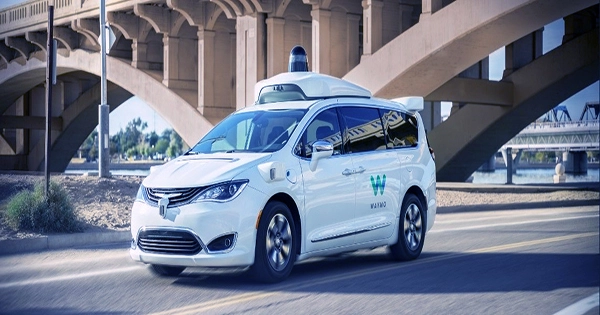Waymo’s self-driving vehicles will debut in New York City on Thursday, but do not expect to call a robotaxi there anytime soon — or ever. The business is still a long way from commercially deploying or testing its driverless vehicles in the city. Instead, Waymo revealed plans to physically drive its vehicles around the highly populated metropolis to map locations and then use the data to improve its technology.
Waymo plans to use up to five of its hybrid Chrysler Pacifica minivans on Manhattan’s streets, from the south side of Central Park through the financial sector, and via the Lincoln Tunnel to a small area of New Jersey. Waymo intends to bring in several of its zero-emission Jaguar I-PACEs by early next year, which will also drive manually.
According to Waymo, each car will have two people: one in the driver’s seat and one in the passenger seat who will assist lead the driver’s behavior, monitor the software on the vehicle in real-time, evaluate the performance, and register comments. Despite the fact that Waymo will not be operating in autonomous mode in NYC, all of the cars it deploys will be equipped with the fifth-generation Waymo Driver, which is informed by 20 million self-driven miles on public roads and over 10 billion miles in simulation, according to Waymo.
Waymo spokesperson Nick Smith told TechCrunch, “The mapping process is a fundamental element of our operations.” “This is how it goes: First, we take our Waymo vehicles out on public roads and use our sensor suite to collect data. Then we clean it up and annotate it with characteristics like crosswalks, road margins, curb heights, boundary paint, junctions, and so on, either automatically or manually. Then we tested our freshly developed map for quality assurance. This procedure is the same wherever we travel, and it’s the same procedure we use when updating our maps.”
Waymo’s cars will be able to drive in practically any weather condition since they will be manually driven throughout the city, according to the business, which will give unique learning opportunities for the next generation of Waymo Drivers. In the summer, New York City is notorious for torrential rains, including hurricanes, and intense snowfall in the winter, both of which are situations that autonomous systems have yet to figure out.
Waymo claims that driving in New York City will help the business to evaluate how its sensors work in wet, cold circumstances in the actual world, rather than only in data augmentation and simulation testing. Waymo will need to seek a New York State autonomous vehicle technology-testing permit if it wants to test its AVs against the pandemonium of jaywalkers, renegade hot dog carts, and reckless bikers. Mayor de Blasio of New York City proposed legislation in September that would let firms testing self-driving vehicles on city roadways seek extra $5,000-per-year permits from the NYC DOT.
This summer, Mobileye, a subsidiary of Intel, became the first company to granted permission to test its autonomous car technology in New York City. Waymo says it has no imminent plans to deploy in the city since it focused on training its self-driving system and implementing what it has learned across its whole fleet. Waymo began growing up its autonomous trucking operations in Texas, California, and Arizona in August, after launching a limited, non-commercial robotaxi service in San Francisco. The California Department of Motor Vehicles issued Waymo a “driven deployment permit” the following month, paving the way for the company to establish a paid robotaxi service in the state.














